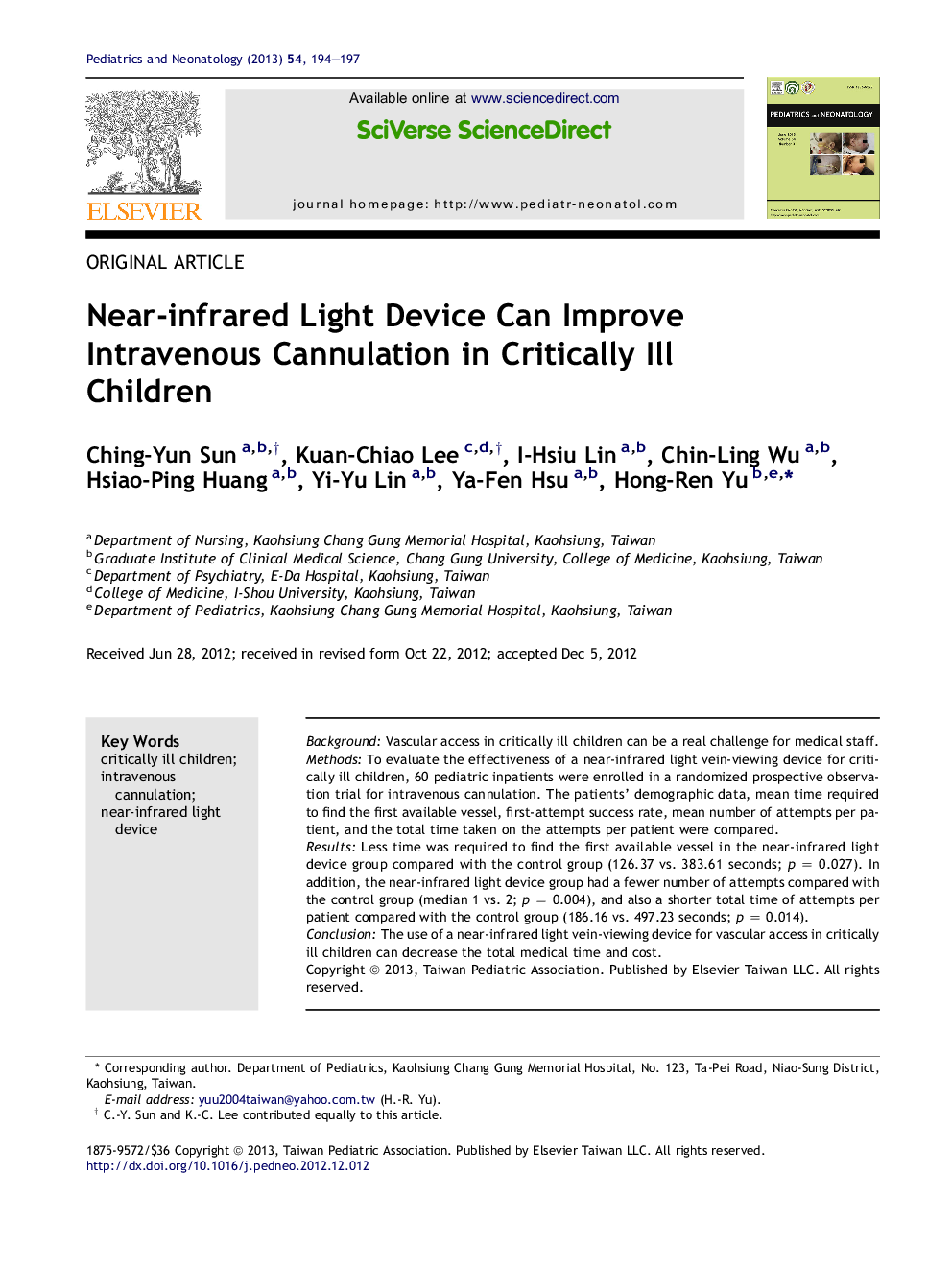| Article ID | Journal | Published Year | Pages | File Type |
|---|---|---|---|---|
| 4175503 | Pediatrics & Neonatology | 2013 | 4 Pages |
BackgroundVascular access in critically ill children can be a real challenge for medical staff.MethodsTo evaluate the effectiveness of a near-infrared light vein-viewing device for critically ill children, 60 pediatric inpatients were enrolled in a randomized prospective observation trial for intravenous cannulation. The patients' demographic data, mean time required to find the first available vessel, first-attempt success rate, mean number of attempts per patient, and the total time taken on the attempts per patient were compared.ResultsLess time was required to find the first available vessel in the near-infrared light device group compared with the control group (126.37 vs. 383.61 seconds; p = 0.027). In addition, the near-infrared light device group had a fewer number of attempts compared with the control group (median 1 vs. 2; p = 0.004), and also a shorter total time of attempts per patient compared with the control group (186.16 vs. 497.23 seconds; p = 0.014).ConclusionThe use of a near-infrared light vein-viewing device for vascular access in critically ill children can decrease the total medical time and cost.
